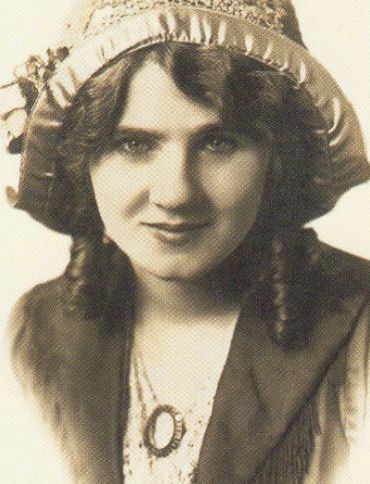Florence Lawrence
 Turn signals and brake lights are standard on all automobiles manufactured today—in fact, it’s hard to imagine cars without them. The inventor of the earliest versions of both was Florence Lawrence, who was, at the time, the highest-paid film actress ever.
Turn signals and brake lights are standard on all automobiles manufactured today—in fact, it’s hard to imagine cars without them. The inventor of the earliest versions of both was Florence Lawrence, who was, at the time, the highest-paid film actress ever.
Lawrence was born in 1886 in Hamilton, Ontario, as Florence Bridgwood. Her surname was changed when she was four to match her vaudeville actress mother’s stage name. Acting was, apparently, in Lawrence’s blood: she started in silent films in 1907 and by 1910 was so popular that she became the first actress to have her name used to advertise a picture. At the height of a career, playing heroines on the silver screen, she invented two key automobile safety devices.
According to Kelly R. Brown’s 1999 biography Florence Lawrence, the Biograph Girl, Lawrence was an automobile aficionado at a time when relatively few people owned cars. “A car to me is something that is almost human,” she later said in an interview, “something that responds to kindness and understanding and care, just as people do.”
She soon set about improving the vehicles she loved. By 1914, she’d invented the first turn signal, called an “auto signaling arm,” which attached to a car’s back fender. When a driver pressed the correct button, an arm electrically raised or lowered, with a sign attached indicating the direction of the intended turn. Her brake signal worked on the same principle: another arm with a sign reading “stop” raised up whenever the driver pressed the brake pedal—the essential concept behind today’s brake lights.
Lawrence’s mother, Lotta Lawrence, got into the act, too: she patented the first electrical windshield wipers, which used a system of rollers, in 1917. But her daughter’s inventions weren’t properly patented, and others soon came out with their own, more refined versions.
By the time the first electrical turn signals became standard equipment on Buicks in 1939, Lawrence’s contributions were long forgotten.
Alice Ramsey
Thanks to the re-enactment at the Shelburne Show we all know who made the first cross-country trip by auto in 1903. In 1909, however, the same trip was attempted and completed by Alice Huyler Ramsey; who made automotive history by becoming only the tenth person and the first woman, to drive across the United States. Ramsey made her trip in a sedan made by the Maxwell-Briscoe Car Company, and the trip took her and three female companions just 59 days, which was faster than any other crossing before that time. Her route took her from Hell’s Gate in New York City to the Golden Gate in San Francisco for a total of 3,800 miles. The same trip that took Ramsey nearly three months almost a century ago would be a mere 8 days today.










